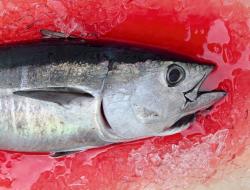How Things Work: Aquaculture Proves Problematic
February 14, 2011 | 2 min to read

While a large portion of our food supply is harvested from the land, there also exists an important underwater component of farming. On Feb. 9, the National Oceanic and Atmospheric Administration (NOAA) released a suggested procedure to the federal government about the future of American aquaculture, or the farming of aquatic organisms for human consumption and other uses. The NOAA, in a public statement released on its website, said that such practices could improve nationwide food production, advance technological innovations, and create jobs in coastal regions. Neither the argument for aquaculture, nor the resistance it has met by many who favor safer aquatic environmental practices, are new developments.
Modern aquaculture grew out of millennia-old practices of sea harvesting and fishing. After World War II, it became seriously considered as a viable source of food. Aquaculture in the 20th and 21st century took place primarily in Asia — over 70 percent of global aquaculture activity was in China in 2002, following forty years of growing business. In 1970, aquaculture made up 3.9 percent of worldwide fish production, and in thirty years, that number had risen to 27.3 percent. Three of the largest distributors of aquaculture products are Costco Wholesale Corporation, the Kroger Corporation, and Sysco Corporation, one of the largest food distributors in the world. According to an article about genetically engineered salmon in the Washington Post on Aug. 2, the global aquaculture market totaled over $86 billion.
There has been criticism, however, pointing to poor green practices in implementing aquaculture. A common cause of complaints against aquaculture is its effect on the natural populations of fish wildlife. Salmon and shrimp culturing is especially harmful, as reported by a publication on the Providence College website. Fish wastes, antibiotics, and uneaten food involved in this type of aquaculture increase algae and phytoplankton growth, which depletes the water of its oxygen levels.
SeaWeb, a nonprofit organization, suggested that the development of more carnivorous fish creates unsafe ecological conditions for the rest of the ocean, especially since many of these aquaculture farms need to be located directly on the ocean coast. Salmon and shrimp, being carnivorous, require the protein of other fish in their diets, sometimes up to three to five pounds worth of feeder fish. This creates a net loss in protein, since the salmon and shrimp are consuming more meat than they are producing.
To read the rest of the story, please go to: The Tartan (Pittsburgh, PA).
